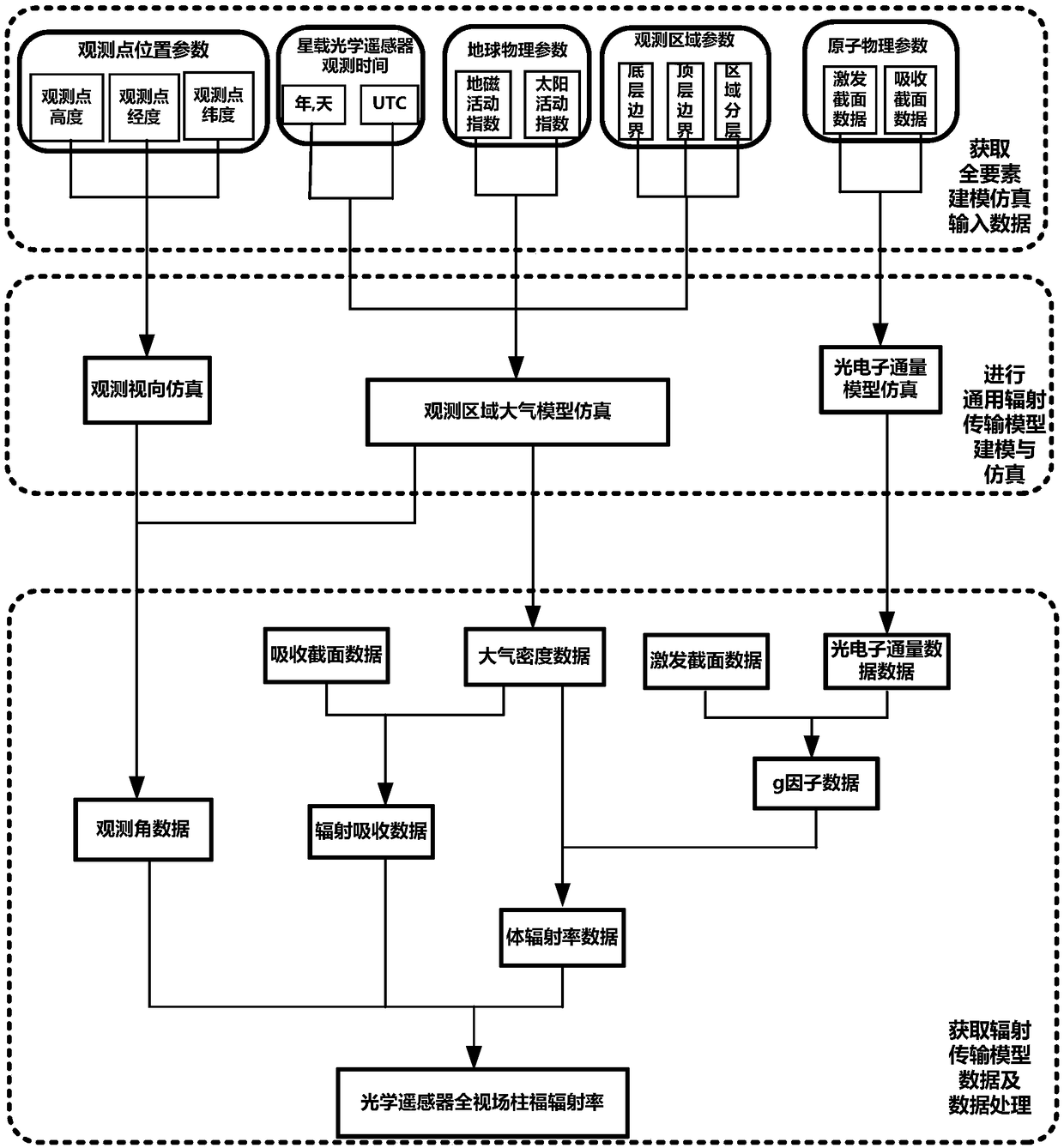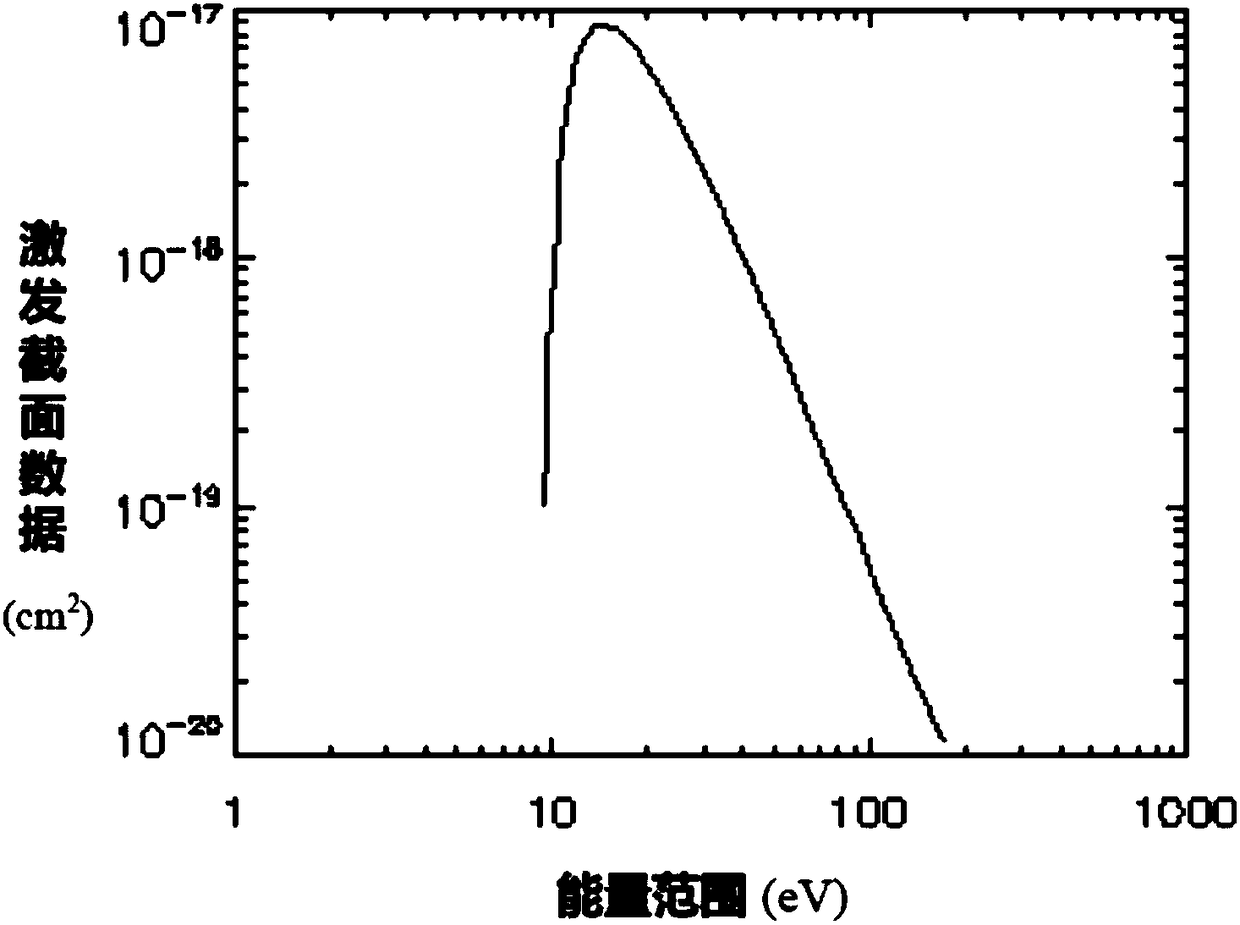Full-view-field column radiation ratio determining method of spaceborne optical remote sensor
An optical remote sensor and a technology for determining methods, which are applied in the field of optical remote sensing radiation algorithms, can solve problems such as large amount of calculation, calculation error of column radiance rate, inability to describe the density change of the earth's upper atmosphere in detail, and achieve the effect of reducing the amount of calculation
- Summary
- Abstract
- Description
- Claims
- Application Information
AI Technical Summary
Problems solved by technology
Method used
Image
Examples
Embodiment Construction
[0047] The invention provides a method for determining the full field of view column radiance of a spaceborne optical remote sensor, and provides a method for determining the full field of view column radiance of a spaceborne optical remote sensor, especially a method for observing spectral radiation signals in the far ultraviolet band For a push-broom or scanning spaceborne optical remote sensor, this method gives the calculation results of the columnar radiance at each pixel in the full field of view of the spaceborne optical remote sensor corresponding to different viewing directions. According to the observation time of the spaceborne optical remote sensor, the position of the observation point, the observation angle, the atmospheric model of the observation area, etc., the present invention comprehensively considers the changes of the atmospheric density of the observation area, the change of the solar zenith angle, the change of the photoelectron energy, etc., and accurate...
PUM
 Login to View More
Login to View More Abstract
Description
Claims
Application Information
 Login to View More
Login to View More - R&D
- Intellectual Property
- Life Sciences
- Materials
- Tech Scout
- Unparalleled Data Quality
- Higher Quality Content
- 60% Fewer Hallucinations
Browse by: Latest US Patents, China's latest patents, Technical Efficacy Thesaurus, Application Domain, Technology Topic, Popular Technical Reports.
© 2025 PatSnap. All rights reserved.Legal|Privacy policy|Modern Slavery Act Transparency Statement|Sitemap|About US| Contact US: help@patsnap.com



